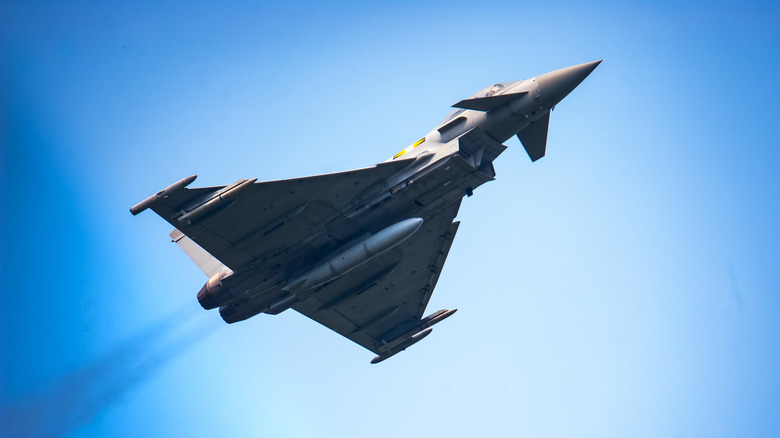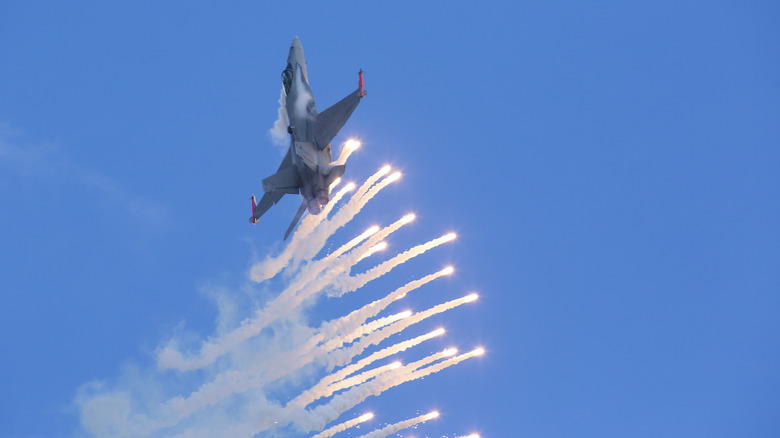What Is BVR And Why Is It Important For Jet Fighters?
Beyond Visual Range (BVR) is the term for a fighter jet's ability to detect, track, and engage enemy targets outside of the pilot's visual line of sight. The concept goes hand-in-hand with BVRAAMs, or BVR Air-to-Air Missiles. This weapon system uses a combination of active radar homing, infrared tracking, and mid-course correction systems to autonomously home in on targets anywhere from 25 to more than 100 miles away.
BVR weapons can neutralize threats long before an up-close-and-personal confrontation takes place. Unlike some of the most intense dogfights in aerial combat history, where pilots had to physically spot and strategically engage with their targets at a relatively close range, BVR allows a fighter jet to fire while the enemy is nothing more than a far-off blip on the radar. It's effective and also dramatically increases survivability during conflict.
With the help of advanced high-speed propulsion systems (like ramjets and dual-pulse rocket motors) and advanced onboard computers , these missiles can track and destroy targets without any further input from the pilot after launch.
The role of BVR in air combat
Even though BVR missiles are technologically advanced, using them is not as simple as locking onto a target and firing. BVR combat strategy means positioning the aircraft and launching the missile while staying outside the enemy's WEZ, or Weapon Engagement Zone (the area where an enemy missile could reach). Because every missile's WEZ changes with altitude, speed, and angle of attack, pilots have to constantly evaluate their positioning using real-time data and predictive modeling to stay safe themselves.
One of the most reliable strategies in BVR combat is known as an "out," a high-speed turn away from the threat to escape the WEZ. By turning before entering this zone, pilots can avoid enemy missiles altogether. This maneuver uses a ton of fuel because it requires the pilot to engage the jet's afterburner, but it's often the only surefire way to guarantee survival. For it to work, pilots have to understand the Minimum Abort Range (MAR), the distance pilots have to begin their turn to stay outside the WEZ during evasive maneuvers.
The challenges of BVR warfare
While fighter jets can shoot flares and other decoys, they don't offer guaranteed evasion. A BVR missile can still achieve a lock, even as seeker technology becomes more resistant to traditional countermeasures. However, BVR combat isn't without limitations. Identification Friend or Foe (IFF) systems are one of the biggest. At long distances, pilots may struggle to know whether a radar contact is an enemy aircraft or an allied one. This uncertainty calls for serious caution in real-world conflicts.
For instance, during the Gulf War, BVR missiles were rarely used to their full extent because of the risk of fratricide — an accidental kill of a member of your own team. Throughout the 20th century, the majority of BVR missiles were used on targets within visual range. There are plenty of explanations for this, including the weight and drag from BVR radar systems, as well as the limitations of missile guidance accuracy. Not to mention the potential reluctance of pilots who fear firing without visual confirmation.
Even as modern developments improve missile range, reliability, and seeker intelligence, there's still a gap between BVR's theoretical capability and actual performance. Even the best fighter jets in the world struggle to close it.


